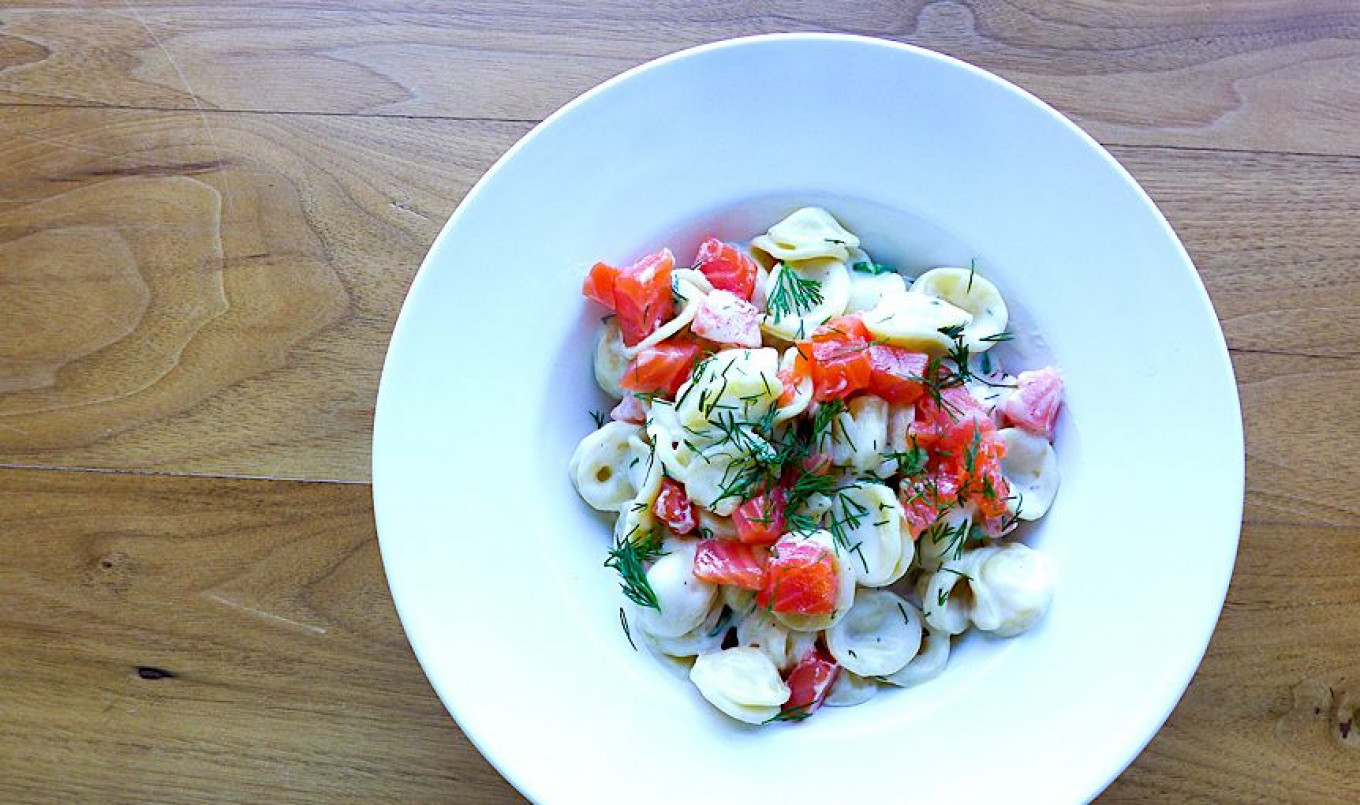
This recipe uses the ultimate Russian pantry staples for a dish that harkens back to a messier, headier, and certainly noisier Moscow.
It goes without saying that Moscow is a lot quieter these days — eerily quiet in a way I doubt it’s been since its founding in 1147 by Yury Dolgoruky. I’ve been thinking about Moscow and its turbulent history lately, remembering the “Naughties” — otherwise known as the Wild Nineties — when I first came to Moscow brimming with energy, ambition, and lofty ideas about changing the world.
I was on a limited budget back then, so trips to the hard currency supermarkets (run for some reason by the Irish) were infrequent, and carefully plotted affairs, and only permissible to source some impossible-to-come-by ingredient like olive oil or creme fraiche. I was working in executive recruitment back then, and my colleagues and I had a cadre of expat bankers for clients living in the Metropol Hotel. Since they were reluctant to leave its confines and were on far more expansive corporate budgets, we often conducted business very congenially down in a subterranean restaurant called Teatro — no doubt because it faced three of Moscow’s most famous stages.
Teatro has long since ceased to be what it was, which in those days was an outlier. It was a real live Italian restaurant, which was almost unheard of. It had things like salads and tartare, lemon sorbet, and Pinot Grigio, and that made it a haven and an oasis. It had waiters in brightly colored waistcoats and bow ties, who knew how to be polite, which was certainly a rarity, and it had properly made pasta dishes. Not the Russian approximation but a real, live, genuine bowl of pasta with real, live Parmesan. It was heaven.
One dish remains in my mind as clear and evocative as Proust’s madeleines. When I think about now, I see that the chefs very cleverly used readily available ingredients — smoked fish and vodka constituting their own separate food groups at any time in Russia’s history — but the final dish was far, far, far more than the sum of its parts: cured salmon tossed with pasta in a delicate cream sauce spiked with vodka and garnished with chives and dill. Then, as now, it was the centerpiece of a coveted treat, particularly when paired with a glass of crisp white wine and some pleasant service.
I can’t remember what it was called, but I have retrospectively christened it “Pasta Perestroika,” and when I make it — as I do often — I am immediately transported to a messier, but headier time filled with hope, promise, and a lot of noise.
This recipe can be adapted to anything you have lurking in the fridge and relies heavily on the Italian method of finishing the pasta with pasta water and cheese, which renders the pasta perfectly cooked with the ideally creamy sauce clinging to the pasta and added ingredients.
Alternative Versions
Make it Vegetarian
Substitute fresh asparagus and peas for the fish: slice the asparagus thinly on the bias and sauté both the peas and asparagus briefly in the butter before you return the pasta to the pot. Garnish with much more dill and some fresh parsley
Make it a Seafood Medley
Use this template for a seafood medley of any poached fish or seafood, such as lobster or shrimp. Red caviar works well here, as does smoked trout or mackerel. Use white wine instead of vodka. Root around in the fridge for suitable additions such as thinly sliced celery, pickled gherkins, fennel, peas, string beans, spinach, or capers.
Make it Spanish
Substitute cubed chorizo sausage or ham for the fish and use Manchego instead of Parmesan. Garnish with basil rather than dill and possibly some fresh figs if you have them.
Make it Cacio e Pepe
This is the method used to make Italy’s beloved pasta dish that somehow consists only of black Pepper and Parmesan. Eliminate the cream, vodka, scallions, and butter and use more Parmesan. Toast whole peppercorns in a skillet until they begin to smoke, then crush them in mortar with a pestle (or the back of a large wooden spoon.). Use the same method of emulsifying the cheese and pasta water, incorporating the cracked Pepper as you do so.
Make it Pesto
Omit the butter for a jar of pesto, then toss as per instructions with the pasta water and cheese. Garnish with more grated cheese.






